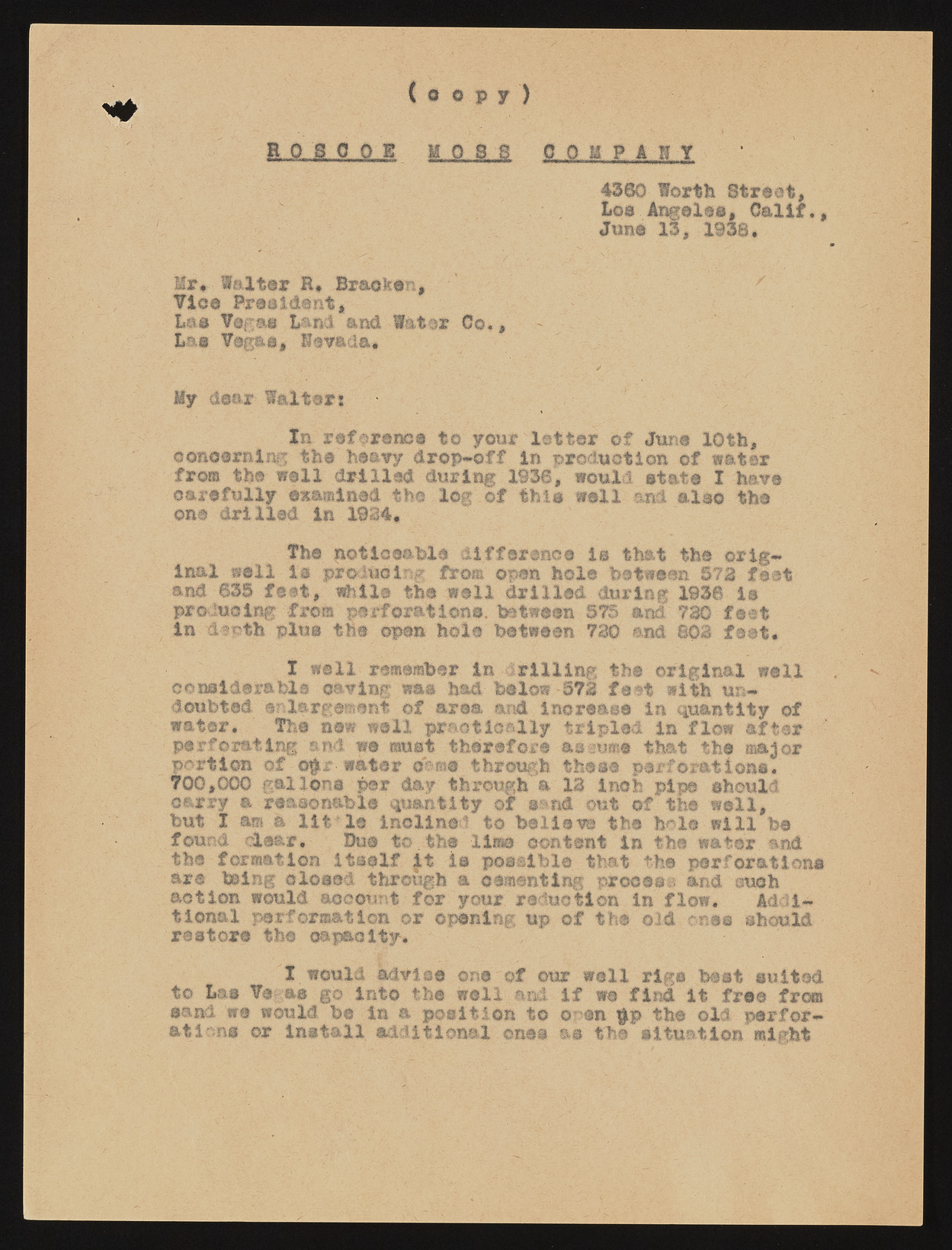Copyright & Fair-use Agreement
UNLV Special Collections provides copies of materials to facilitate private study, scholarship, or research. Material not in the public domain may be used according to fair use of copyrighted materials as defined by copyright law. Please cite us.
Please note that UNLV may not own the copyright to these materials and cannot provide permission to publish or distribute materials when UNLV is not the copyright holder. The user is solely responsible for determining the copyright status of materials and obtaining permission to use material from the copyright holder and for determining whether any permissions relating to any other rights are necessary for the intended use, and for obtaining all required permissions beyond that allowed by fair use.
Read more about our reproduction and use policy.
I agree.Information
Digital ID
Permalink
Details
More Info
Rights
Digital Provenance
Publisher
Transcription
( o o p y ) IQSCOE MOSS 0 0 M P A H Y 4360 forth Street, Los Angelos, Calif., dune 13, 1938. Mr* Walter H* Bracken, Vice President, Lae Vegas hand and Water Co., has Vegas, Nevada* iy dear falters Xn reference to your letter of dune 10th, concerning the heavy drop-off in production of water from the well drilled during 1936, would state I have carefully examined the log of this well mi also the one drilled in 1934* The noticeable difference is that the original well is producing from open hole between 573 feet and 635 feet, while the well drilled during 1936 is producing from perforations, between 575 and 730 feet In depth plus the open hole between 730 and 803 feet. I well remember In drilling the original well considerable caving was had below 572 feet with undoubted enlargement of area and increase in quantity of water. The new well practically tripled in flow after ? perforating and we must therefore actum® that the taa^or portion of opr water come through these perforations. 700,000 gallons per day through a 13 inch pipe should carry a reasonable quantity of iraH out of the well, but I am a lit le inclined to believe the hoi® will be found clear. Due to.the lime content in the wafer and the formation itself |t is possible that the perforations are being closed through a cementing process and ©uoh action would account for your reduction in flow. Additional perforaatien or opening up of the old ones should ?restore the capacity* I would advice one of our well rigs best suited to Las Ve as go into the well and if we find it free from sand we would be in a position to oren pp the old perforations or install additional ones as the situation might

